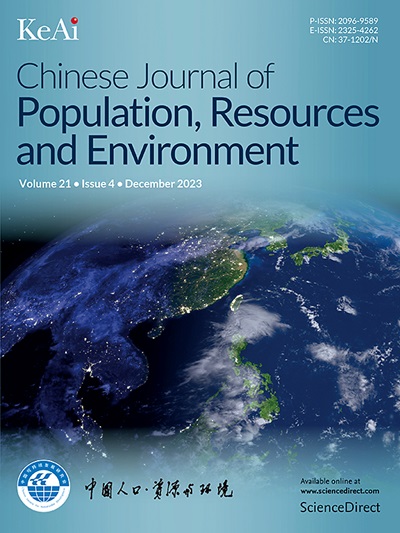Distribution dynamics, regional differences, and convergence of sustainable development of cities and communities in China
IF 4.8
4区 环境科学与生态学
Q2 ENVIRONMENTAL STUDIES
Chinese Journal of Population Resources and Environment
Pub Date : 2024-12-01
DOI:10.1016/j.cjpre.2024.11.008
引用次数: 0
Abstract
China is one of the most populated and rapidly urbanizing countries worldwide and was among the earliest countries to integrate sustainable development into urban construction. To achieve high-quality development and implement the objectives of “Transforming Our World: The 2030 Agenda for Sustainable Development”, it is crucial to measure and analyze the current level of sustainable development of cities in China. Following the principles of relevance, scientific rigor, universality, reliability, and timeliness, this study constructs an assessment index system for sustainable development, covering seven themes corresponding to the UN Sustainable Development Goal 11. Through detailed calculations, we obtained sustainable development indices for 139 Chinese cities from 2016 to 2022 and analyzed them in three dimensions: distribution dynamics, regional differences, and convergence. The key findings are as follows. First, the level of sustainable development showed improvement, with the average score of included cities increasing by 11.88% from 2016 to 2022. Second, the level of sustainable development was relatively balanced, maintaining low Gini coefficients between 0.05 and 0.06. Third, a weak overall σ convergence feature existed, with increased differentiation in 2021. From a regional perspective, a σ convergence feature was observed in the northeastern but not in the western region. Fourth, both overall absolute β-convergence and conditional β effects were significant. Regional absolute β-convergence and conditional β-convergence were also significant. This study contributes to the literature by providing evidence of China’s urban sustainable development, offering policy insights for deepening the implementation of development goals in the future, and providing experiential reference for other developing countries to achieve sustainable development.
中国城市与社区可持续发展的分布动态、区域差异与趋同
中国是世界上人口最多、城市化速度最快的国家之一,也是最早将可持续发展纳入城市建设的国家之一。为实现高质量发展,落实“改变我们的世界:2030年可持续发展议程”的目标,衡量和分析当前中国城市可持续发展水平至关重要。本研究遵循相关性、科学严谨性、普遍性、可靠性和及时性原则,构建了可持续发展评估指标体系,涵盖了与联合国可持续发展目标11相对应的七个主题。通过详细计算,我们获得了2016 - 2022年中国139个城市的可持续发展指数,并从分布动态、区域差异和收敛性三个维度对其进行了分析。主要发现如下。一是可持续发展水平有所提高,2016年至2022年,纳入城市的平均得分提高了11.88%。二是可持续发展水平较为均衡,基尼系数保持在0.05 ~ 0.06的低位。整体σ收敛特征较弱,且在2021年分化程度增强。从区域上看,东北地区存在σ收敛特征,西部地区不存在。第四,总体绝对β-收敛效应和条件β效应均显著。区域绝对β收敛性和条件β收敛性也显著。本研究为中国城市可持续发展提供了证据,为未来深化发展目标的实施提供了政策见解,为其他发展中国家实现可持续发展提供了经验借鉴。
本文章由计算机程序翻译,如有差异,请以英文原文为准。
求助全文
约1分钟内获得全文
求助全文
来源期刊

Chinese Journal of Population Resources and Environment
ENVIRONMENTAL STUDIES-
CiteScore
4.30
自引率
1.10%
发文量
791
审稿时长
79 days
期刊介绍:
The Chinese Journal of Population, Resources and Environment (CJPRE) is a peer-reviewed international academic journal that publishes original research in the fields of economic, population, resource, and environment studies as they relate to sustainable development. The journal aims to address and evaluate theoretical frameworks, capability building initiatives, strategic goals, ethical values, empirical research, methodologies, and techniques in the field. CJPRE began publication in 1992 and is sponsored by the Chinese Society for Sustainable Development (CSSD), the Research Center for Sustainable Development of Shandong Province, the Administrative Center for China's Agenda 21 (ACCA21), and Shandong Normal University. The Chinese title of the journal was inscribed by the former Chinese leader, Mr. Deng Xiaoping. Initially focused on China's advances in sustainable development, CJPRE now also highlights global developments from both developed and developing countries.
 求助内容:
求助内容: 应助结果提醒方式:
应助结果提醒方式:


